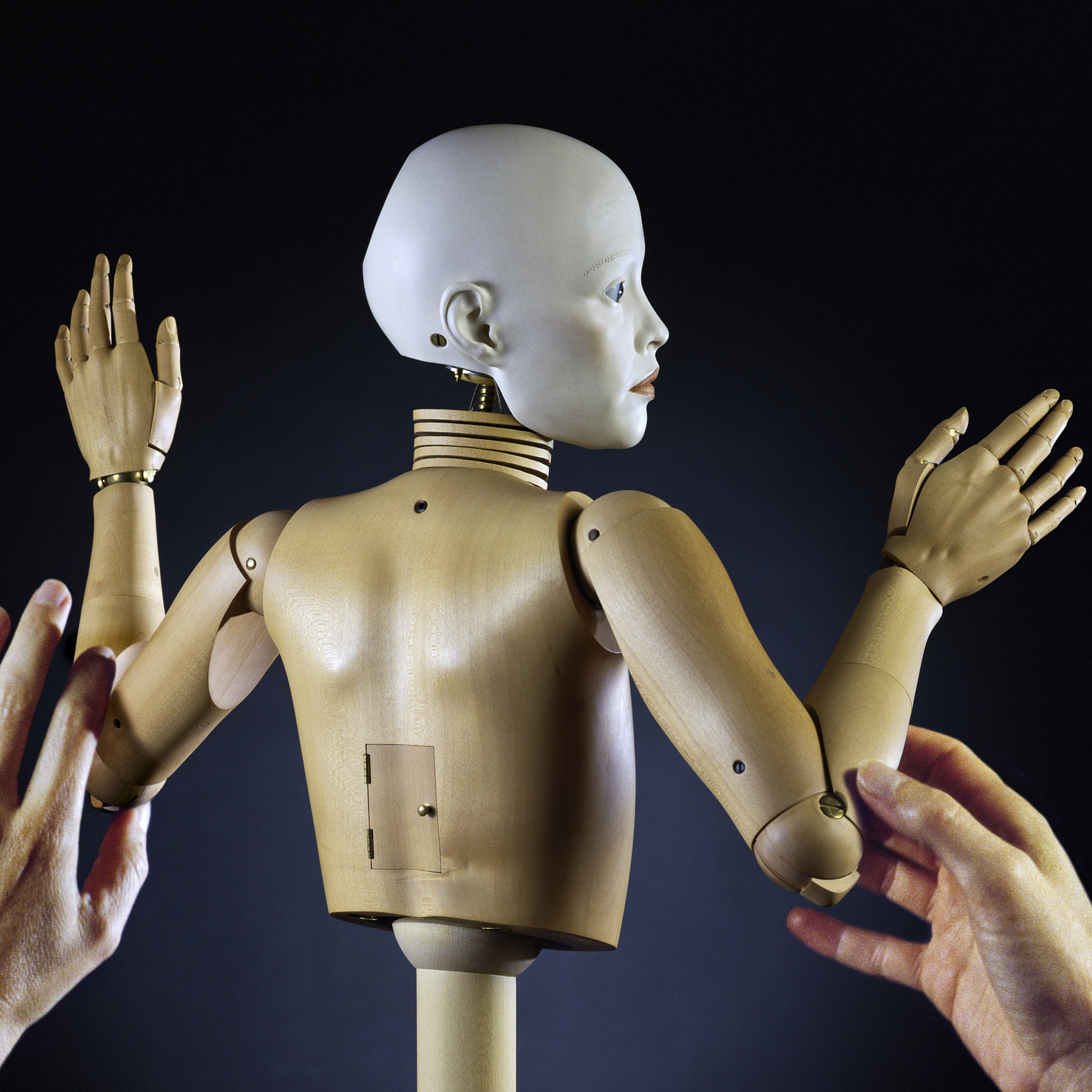
 Exhibition
Exhibition- March 4, 2017 - January 22, 2018
- MASS MoCA
“Navigating between digital technology and laborious handcraft, Ms. King pursues the elusive spark of animation, the moment when a wooden hand waves gently and tentatively moves its wonderfully opposable thumb.”
Read The New York Time‘s review of Radical Small.
Values become engulfed in miniature, and miniature causes men to dream. Gaston Bachelard, The Poetics of Space.
… if there is no smallest point, every minutest body will be composed of an infinite number of parts, since a half of a half will always have a half and there will be no limit to the possibility of division. If this is the case, what will distinguish the whole universe from the smallest thing in it? Nothing, for no matter how fully infinite is the whole universe, the minutest objects will equally be composed of an infinite number of parts. Lucretius, On the Nature of Things
An ambitious installation combining small sculptures and large videos, Radical Small was Richmond, Virginia-based artist Elizabeth King’s most expansive one-person exhibition to date. Utilizing one of MASS MoCA’s largest exhibition spaces on the museum’s second floor, King examined the notion of radical smallness, or what French philosopher Gaston Bachelard has called “intimate immensity.” The exhibition of sculpture and video animation opened to the public on March 4, 2017, with a reception that followed on Saturday, March 18.
“By starting with the smallest, most subtle of gestures,” noted curator Denise Markonish, “King absorbs our full attention, drawing us into a world where the small engulfs us and allows us to dream.” As the artist herself put it, “In sculpture, when you represent a body at a size different from its own, metaphor rushes in.” King combined precisely movable half-scale figurative sculptures with projections of stop-motion video animations in works that skillfully merged and confused the boundary between actual and virtual objects. Intimate in scale — this was theater for an audience of one — and made to solicit close viewing, the work reflected her interests in early clockwork automata, the history of the mannequin, puppetry, and literature’s host of legends in which the artificial figure comes to life. For MASS MoCA, King tested the power of small sculpture to articulate and command a large double-height gallery, staging an extended exchange of dimensionality and scale through the languages of sculpture, film, and animation. Additionally, King used the gallery as an animation studio for the first two weeks of the exhibition, producing a new film of her sculptures at MASS MoCA.
“King’s works, even when still, seem alive. They are animated in the most fundamental sense of the word,” noted Markonish. “They look back at us. Their uncanny humanness literalizes art’s ability to meet and confront our gaze.”
“I want a portrait, not so much of a person, but of a verb,” King said. “Maybe the sculpture is like a violin, and the pose is the sonata. Finding the pose and lighting it precisely — I’m amazed at the difference a few degrees of tilt make in how we read the position of the head. If I move the eyes so the gaze shifts away from face on, even just slightly, a thread of tension enters the pose. I love the visceral evidence of impermanence, not in the object itself, but in its pose at any given moment.”
From March 16 to March 22, King turned MASS MoCA’s galleries into an animation studio, producing a new stop-motion film of her sculptures. Meticulously crafting and tracking the tiniest of movements, King and renowned animator Michael Belzer, who has worked with director Tim Burton, brought the artist’s painstakingly detailed, half-scale sculptures to an uncanny humanness. Once complete, the new stop-motion video became part of the exhibition. The stage, too, remained on-site, providing visitors the opportunity to glance behind the animated, emotional lives of King’s figures.
Further Reading
The Art Bulletin, March 2012
Feature: “Notes From the Field: Anthropomorphism,” Elizabeth King
Principal exhibition support was provided by Pamela K. and William A. Royall, Jr. Major exhibition support was provided by the Horace W. Goldsmith Foundation, the Barr Foundation, and the Massachusetts Cultural Council.
View of King posing her work: Pupil, 1987-90
Porcelain, glass eyes, carved wood (Swiss pear), brass.
Half life-size. Dimensions vary: eyes and all joints movable.

